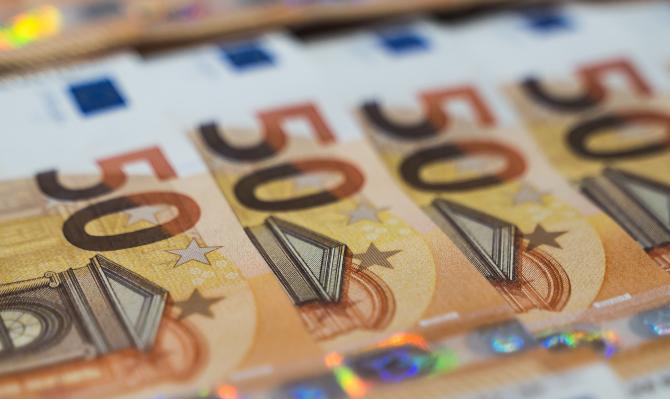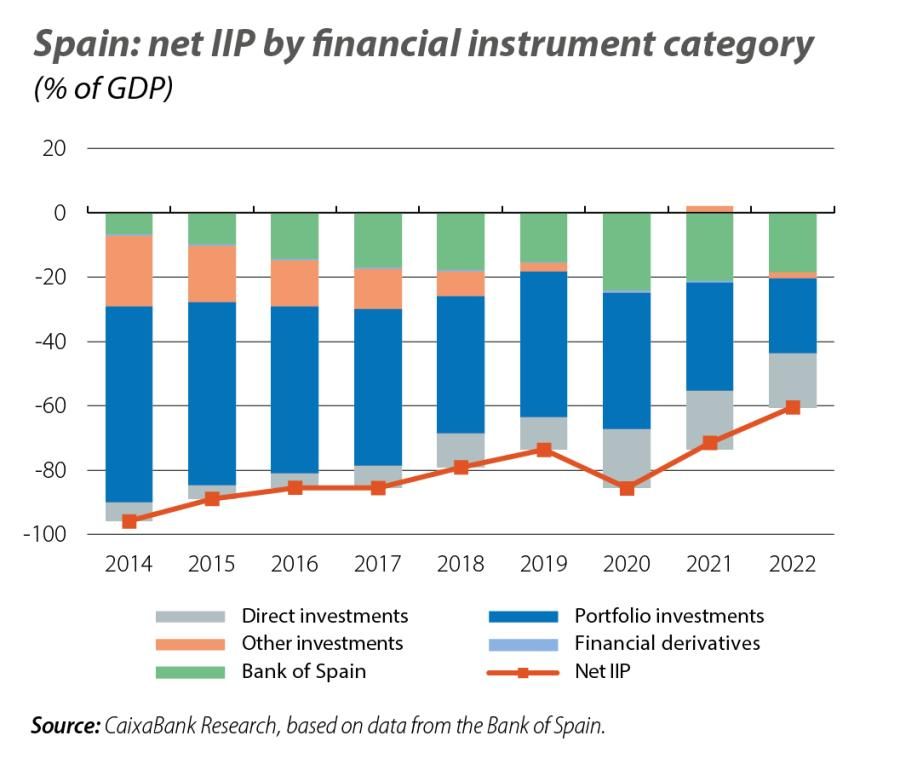The Spanish economy continued to reduce its foreign debt in 2022
One of the imbalances that has traditionally characterised the Spanish economy is its high levels of foreign debt, which is a source of vulnerability in the event of possible shocks in the financial markets and also jeopardises the sustainability of expansionary cycles.

One of the imbalances that has traditionally characterised the Spanish economy is its high levels of foreign debt, which is a source of vulnerability in the event of possible shocks in the financial markets and also jeopardises the sustainability of expansionary cycles. In the period 2014-2019, in an environment of low interest rates and with a highly buoyant economy that had a positive lending capacity, we witnessed a slow reduction in the country’s level of debt. This pattern was truncated by the crisis triggered by the pandemic, but it has resumed again in the last two years. In this regard, Spain’s net international investment position (NIIP), which measures the balance of the country’s financial assets and liabilities vis-à-vis the rest of the world, closed last year with a debit (negative) balance of 802,382 million euros. This is equivalent to 60.5% of GDP, the lowest level since 2004 (71.5% in 2021). In any case, this is still high and far exceeds the threshold set by the European Commission as part of the macroeconomic imbalance procedure (MDP).1
- 1A surveillance mechanism aimed at preventing and correcting macroeconomic imbalances in EU countries by monitoring 14 indicators, which generate a warning signal when certain thresholds are exceeded; in the case of the debit balance of the NIIP, this threshold is set at 35% of GDP.

Excluding the Bank of Spain, the debit balance of the NIIP fell by 52,468 million euros in 2022, bringing it to 555,676 million (see second chart). However, this improvement was the result of a revaluation effect of the existing assets and liabilities (due to exchange rate or price fluctuations), rather than financial transactions with other countries (an increase in assets and/or a reduction in liabilities). The effect of exchange rates had a positive impact on the assets, mainly due to the appreciation of the dollar. Price changes, meanwhile, had a greater impact on the liabilities and in the opposite direction: the increase in long-term interest rates reduced the value of debt securities, in particular those of the general government.

Looking at the breakdown by financial instrument, the correction of the NIIP debit balance is explained by portfolio investments, which registered a reduction in their debit balance, above all because of the impact of price changes. The balance of the other categories of instruments deteriorated: in the case of direct investments,2 this was mainly due to the revaluation effect; in other investments,3 it was essentially due to negative net financial transactions with other countries (the liabilities grew more than the assets).

By sector,4 in line with the reduction in the value of debt securities discussed above, only the general government saw an improvement in its NIIP; indeed, this was a significant improvement, registering the lowest debit balance since 2017. In contrast, there was a deterioration in the position of both monetary financial institutions (MFIs), which saw a reduction in their credit balance, and other resident sectors (ORSs), which increased their debit balance.
- 4The IIP is divided into four institutional sectors: (i) Bank of Spain, (ii) other monetary financial institutions (MFIs) – credit institutions, money market funds, electronic money institutions and financial credit establishments – (iii) general government and (iv) other resident sectors (ORSs) – households, companies and non-monetary financial institutions (NMFIs), which include insurance firms and pension funds, among others.

As for gross foreign debt,5 for the first time since 2013 it fell slightly last year in volume terms, reaching 2,332 trillion euros, down from the 2,334 trillion of the previous year. If we add to this the intense growth of nominal GDP (10.0%), we see (for the second consecutive year) a very sharp decline in the debt-to-GDP ratio (175.7% vs. 193.4%): this reduction was concentrated in the ORSs (22.9% of GDP vs. 25.8%) and especially in the general government entities, where it stood at 44.7% of GDP. This latter level is 12 pps below the previous year and the lowest ratio since 2013, partly because of the purchasing of public debt through the Eurosystem, which led to a portion of the debt held by non-residents being transferred to the Bank of Spain. In contrast, MFIs increased their debt levels to 41.1% of GDP, the highest since 2014 (previously 37.5%).
Although Spain’s gross foreign debt remains high, even exceeding pre-pandemic levels (169.8% of GDP in 2019), the vulnerability which this represents in a context of rising financing costs is dampened by the composition of its liabilities, given that they are mostly not enforceable in the short term, they consist of public sector debt and they are mostly denominated in euros and at a fixed rate.6
- 5Includes the balance of all liabilities that generate future payment obligations (principal, interest or both); i.e. it is composed of financial instruments included in the liabilities of the international investment position, except equities (shares, other equity holdings and holdings in investment funds) and financial derivatives.
- 6Bank of Spain (2022). «Financial Stability Report», autumn.